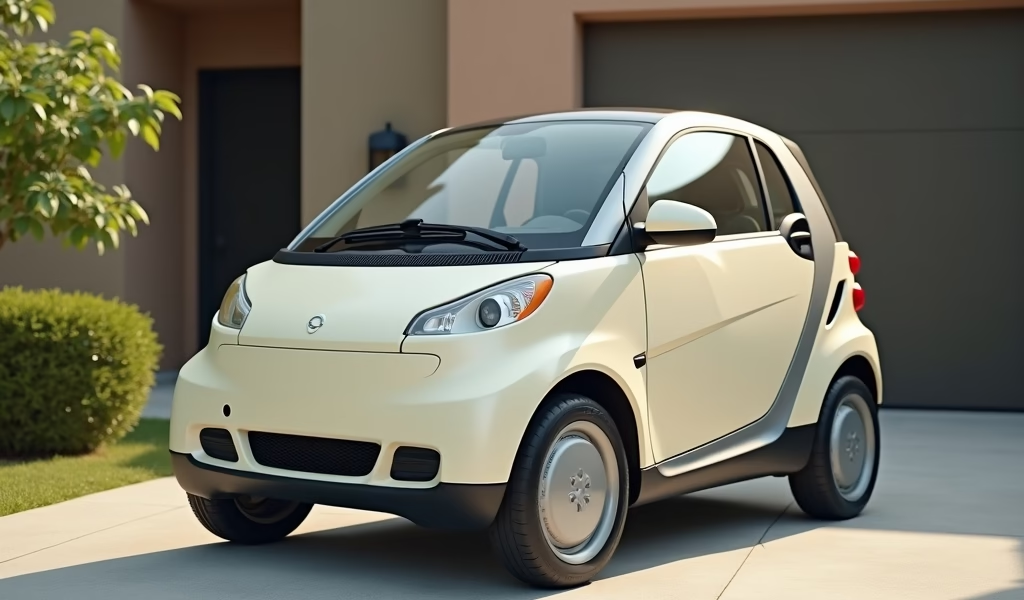Overview
This guide teaches beginners essential car maintenance skills including checking fluids, changing oil, inspecting tires, and performing seasonal care while explaining when to DIY versus when to seek professional help. Regular maintenance not only extends your vehicle’s lifespan and prevents expensive emergency repairs, but also empowers drivers with practical knowledge that builds confidence through simple tasks before progressing to more advanced maintenance.
Table of Contents
- Introduction
- Essential Tools for the Beginner Mechanic
- Understanding Your Vehicle
- Routine Maintenance Tasks Anyone Can Master
- Seasonal Maintenance Tips
- When to DIY vs. When to See a Professional
- Troubleshooting Common Issues
- Creating a Maintenance Schedule
- Money-Saving Tips
- Conclusion
- Frequently Asked Questions
Introduction
Have you ever been stranded on the roadside with a vehicle that decided it was the perfect moment to break down? We’ve all been there. The good news? Many car problems can be prevented with simple, regular maintenance—no mechanical engineering degree required!
Learning car maintenance for beginners is less intimidating than you might think. Understanding the basics is as essential as knowing how to drive. Not only does regular upkeep extend your vehicle’s lifespan, but it also prevents those wallet-draining emergency repairs that seem to come at the worst possible times.
Think of car maintenance like brushing your teeth—a little prevention goes a long way! There’s something empowering about lifting your hood and knowing exactly what you’re looking at, rather than seeing an intimidating jumble of mysterious parts.
By the end of this guide, you’ll be speaking “car” with the best of them, and your vehicle will thank you for it with fewer breakdowns and a longer life on the road.
Essential Tools for the Beginner Mechanic
Every DIY mechanic needs a trusty toolbox. Don’t worry—you don’t need to empty your bank account at the auto store. Start with these essentials:
- A quality set of screwdrivers (flathead and Phillips)
- Adjustable wrench
- Pliers set (including needle-nose)
- Socket set with ratchet
- Tire pressure gauge
- Jack and jack stands
- Funnel
- Oil drain pan
- Flashlight or headlamp
- Work gloves
Budget-conscious beginners can find quality tools at discount stores, online marketplaces, and even garage sales. Remember, it’s better to invest in mid-range tools that will last rather than the cheapest options that might break when you need them most.
As for your workspace, even a small garage or driveway can become an efficient maintenance area. Keep a pegboard for hanging tools, use plastic bins for organizing smaller items, and consider a rolling tool cart if space permits. A good rule of thumb: everything should have a home, and cleaning up as you go prevents lost parts and skinned knuckles.

Understanding Your Vehicle
That thick booklet gathering dust in your glove compartment? It’s actually a goldmine of information. Your owner’s manual contains specific details about your vehicle’s maintenance schedule, fluid specifications, and troubleshooting guides. Think of it as your car’s personal biography—it tells you everything you need to know about caring for your specific model.
Next, let’s demystify what’s under the hood. Pop it open and identify these key components:
- Engine oil dipstick (usually has a brightly colored handle)
- Coolant reservoir (a translucent plastic container)
- Brake fluid reservoir (typically on the driver’s side)
- Power steering fluid reservoir
- Windshield washer fluid container
- Battery
- Air filter housing
Those colorful lights on your dashboard aren’t just festive decorations—they’re your car’s way of communicating with you. The check engine light, oil pressure warning, battery alert, and temperature warning are particularly important to understand. Consider purchasing an inexpensive OBD-II scanner that can read the codes when your check engine light appears, giving you valuable information before heading to a mechanic.
Routine Maintenance Tasks Anyone Can Master
Checking and Changing Oil
Oil is your engine’s lifeblood, and checking it regularly is one of the simplest yet most important maintenance tasks. With your car parked on level ground and the engine cool, remove the dipstick, wipe it clean, reinsert it, and check the level. The oil should be between the minimum and maximum marks and appear amber to light brown—not black and gritty.
Changing your oil might seem daunting, but it’s surprisingly straightforward:
- Warm up your engine (but not hot)
- Locate the oil drain plug underneath your car
- Position your drain pan beneath the plug
- Remove the plug and allow oil to drain completely
- Replace the drain plug
- Remove the old oil filter and replace with a new one
- Add new oil through the fill hole on top of the engine
- Check the dipstick to ensure proper level
Monitoring and Topping Off Fluids
Besides oil, your car needs several other fluids to function properly. Regularly check and top off:
- Coolant (when the engine is COLD)
- Brake fluid
- Power steering fluid
- Transmission fluid
- Windshield washer fluid
Each has its own reservoir and appropriate level indicators. Remember never to remove the radiator cap when the engine is hot—the pressurized coolant can cause severe burns.
Inspecting and Changing Air Filters
Your car has two main filters: the engine air filter and the cabin air filter. The engine filter keeps debris from entering your engine, while the cabin filter ensures you’re breathing clean air inside your vehicle. Checking them is simple—remove the filter housing (usually secured by clips or simple screws), hold the filter up to the light, and if you can’t see through it, it’s time for a replacement.
Checking Tire Pressure and Tread Depth
Your tires are literally where the rubber meets the road, making them critical safety components. Check tire pressure monthly using a gauge (the recommended PSI is usually listed on a sticker inside your driver’s door jamb). For tread depth, use the penny test—insert a penny into the tread with Lincoln’s head upside down. If you can see the top of Lincoln’s head, it’s time for new tires.
According to NHTSA guidelines on tire safety, properly maintained tires improve vehicle handling, help protect you in emergency situations, and even improve fuel economy.
Seasonal Maintenance Tips
Winter Preparation
As temperatures drop, your car needs special attention:
- Switch to winter-grade oil if recommended
- Check your battery (cold weather reduces battery efficiency)
- Replace wiper blades and add winter washer fluid
- Consider snow tires if you live in a snowy region
- Check your antifreeze/coolant mixture
- Pack an emergency kit with blankets, flashlight, and snacks
Summer Essentials
Hot weather brings its own challenges:
- Check your cooling system thoroughly
- Test your air conditioning before you really need it
- Monitor tire pressure (heat causes pressure to increase)
- Check belts and hoses for cracks from heat stress
- Keep your coolant topped off
Spring and Fall Checkups
These transitional seasons are perfect for comprehensive inspections:
- Examine wiper blades after winter’s harsh conditions
- Check for pothole damage to tires and alignment
- Test your car battery after winter’s drain
- Inspect undercarriage for salt damage (spring)
- Check heater functionality before winter arrives (fall)

When to DIY vs. When to See a Professional
Safe DIY Tasks
Many car owners hesitate to dive into maintenance due to fear of causing damage. We understand that concern! Start with these completely beginner-safe tasks:
- Changing wiper blades
- Replacing air filters
- Topping off fluids
- Changing light bulbs
- Checking tire pressure
- Cleaning the interior and exterior
As you gain confidence, you can graduate to oil changes, battery replacement, and brake pad inspection.
Professional Attention Required
Some warning signs should send you straight to a professional:
- Transmission issues (slipping, grinding)
- Engine overheating
- Brake system problems beyond pad replacement
- Electrical system failures
- Suspension damage
- Timing belt replacement
- Check engine light that persists after simple diagnostics
Remember, there’s no shame in consulting a professional when you’re uncertain. When in doubt, don’t figure it out—ask an expert! You’ll never go wrong by seeking professional advice when something seems beyond your comfort level.
The ASE-certified technician directory can help you locate qualified professionals in your area when you need expert assistance.
Overcoming DIY Hesitation
It’s completely normal to feel nervous about working on your own vehicle. Many car owners worry they’ll break something expensive or create a safety hazard. Start small with basic maintenance tasks where mistakes are unlikely and inexpensive to fix.
Remember that online tutorials, your car’s manual, and even mechanic forums are available if you get stuck. And the truth is, you can always stop and consult a professional if you encounter something unexpected. With each successful maintenance task, your confidence will grow along with your skills.
Finding a Trusted Mechanic
Building a relationship with a reputable mechanic is invaluable. Look for shops with ASE-certified technicians, good online reviews, and transparent pricing. A good mechanic will explain what needs fixing now versus what can wait, and may even be willing to teach you some essential maintenance tips.
Troubleshooting Common Issues
Decoding Strange Noises
Cars talk to us through sounds—we just need to learn their language:
- Squealing when starting: likely a loose or worn belt
- Grinding when braking: worn brake pads
- Knocking in the engine: could be serious internal issues
- Hissing: often a vacuum leak or coolant issue
- Clunking when going over bumps: suspension problems
Battery Basics
A dead battery is one of the most common car issues. Signs of battery trouble include dim headlights, slow cranking when starting, and electrical systems that don’t work properly. Learning to jump-start your car safely is an essential skill, as is knowing how to use a battery tester to check its health.
Brake Concerns
Your brakes give several warnings before failing completely:
- Squealing or grinding noises
- Soft or spongy brake pedal
- Vibration when braking
- Vehicle pulling to one side during braking
- Warning light on dashboard
Never ignore brake warnings—they’re literally your vehicle’s most important safety system.
Creating a Maintenance Schedule
Keeping track of your maintenance history is like maintaining your car’s medical records. Whether you prefer digital or analog methods, consistency is key.
Several smartphone apps like CARFAX Car Care, aCar, and MyCarFax can track your maintenance schedule, send reminders, and even store receipts and photos. If you prefer paper, a simple notebook with dates, mileage, and services performed works perfectly.
Set calendar reminders for regular maintenance based on your owner’s manual recommendations. Remember that modern vehicles typically need service based on both time and mileage—whichever comes first.
Money-Saving Tips
The old adage “an ounce of prevention is worth a pound of cure” was practically written for car maintenance. Replacing a $20 air filter regularly can prevent a $3,000 engine repair down the road. Similarly, $50 spent on regular oil changes prevents engine damage that could cost thousands.
For parts, consider:
- Reputable online retailers like RockAuto and AutoZone
- Local junkyards for rare or expensive components
- Rebuilt or remanufactured parts for significant savings
- Joining forums specific to your make and model for advice
Online communities can be invaluable resources. Websites like YouTube have detailed tutorials for nearly every maintenance task imaginable, while model-specific forums often have solved the exact problem you’re facing.
Conclusion
Basic car maintenance isn’t rocket science—it’s more like learning to cook. Start with simple recipes (checking fluids), work your way up to more complex dishes (changing filters and oil), and before long, you’ll be creating maintenance masterpieces that keep your vehicle running smoothly for years to come.
Remember that every minute spent on maintenance now saves hours of headaches and hundreds of dollars later. We believe in empowering every driver with the knowledge to care for their vehicle properly.
Start small, be patient with yourself, and don’t be afraid to get your hands a little dirty. As your confidence grows, so will your maintenance skills. And if you’re looking to expand your automotive knowledge further, keep an eye on our blog—we’re publishing a comprehensive Used Car Buyer’s Guide next month that will walk you through everything you need to know before making your next vehicle purchase.
Your car takes care of you every day—returning the favor is easier than you might think. Happy maintaining!
Frequently Asked Questions
How often should I change my car’s oil?
For conventional oil, the standard recommendation is every 3,000-5,000 miles or 3-6 months, whichever comes first. Synthetic oil can last longer, typically 7,500-10,000 miles, but always check your owner’s manual for manufacturer specifications.
What’s the easiest car maintenance task for a complete beginner?
Checking and topping off fluids is the simplest place to start. You’ll just need to locate the appropriate reservoirs, check the levels, and add more if needed—no tools required for most fluid checks.
Can I damage my car by attempting DIY maintenance?
While it’s possible to make mistakes, starting with basic tasks like changing air filters or wiper blades presents minimal risk. Begin with simple maintenance, follow instructions carefully, and don’t hesitate to stop and consult a professional if you’re uncertain about anything.
What’s the most important maintenance task that prevents expensive repairs?
Regular oil changes are arguably the most crucial maintenance task for preventing major engine damage. Clean oil properly lubricates your engine’s moving parts, preventing excessive wear and overheating that can lead to catastrophic failure.
How do I know when my brakes need service?
Listen for squealing, grinding, or scraping noises when braking, and pay attention if your vehicle pulls to one side or if the brake pedal feels soft or spongy. These symptoms indicate it’s time for a brake inspection and possible service.

